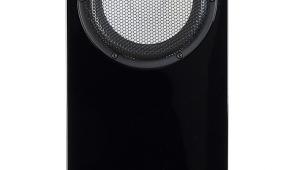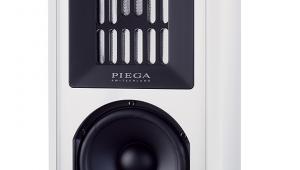Franco Serblin Ktêma Loudspeaker Page 2
![]() A Sound For Life
A Sound For Life
As the speakers' cabling throughout is Yter's pure silver-palladium mono wiring, I used the same for the review. Connection was straightforward via superbly-made binding posts. And there was an instant discovery, which concurred with PM's findings: the imagined ease-of-driving suggested by the 4ohm impedance and 92dB sensitivity was optimistic. While I barely got the needles on the D'Agostino Momentum Stereo [HFN Jul '11] to flicker (and the sensitivity for the meters was set to 'high'), the Ktêmas love a lot of juice… and enjoy delivering realistic levels.
That's not to say that the Ktêmas cannot whisper, for they excel at low levels. They seemed to operate independently of pure SPLs, and the grilles – which Franco told me were inspired by violin strings – have absolutely no effect on the sound. If you can hear the difference, I will give you a bottle of Barolo. But the need for loads of power in reserve was manifested in the way the lower registers behaved, especially regarding control and slam.
I found this amusing, because Franco designed his loudspeakers more for finesse than force. The percussion in the remastered Abbey Road [Apple 02577 92112; CD/Blu-ray box] made some visitors jump visibly in their seats, the weight and scale so rich and substantial it was hard to credit even two pairs of 230mm woofers. But it was the control and transient attack which proved even more dazzling than the extension or bass quantity. Ringo's break at the tail-end of 'Carry That Weight' had nearly the impact of that legendary release, The Sheffield Drum Record. Yes, it was that vivid, especially its stage width and cavernous front-to-back depth.

Life Changing
When dealing with the Ktêma, though, one needs to keep in mind the raison d'être, which is the spatial element, in the same way that one considers a Lotus for handling or a Ferrari for speed. I put on Ray Anthony's admittedly schmaltzy Dancing Over The Waves [Capitol ZC-87], a 7½ips, ½-track tape from 1958 possessing the finest big band pedigree, firing up my treasured Denon DH-710F open-reel deck in order to savour it.
It proved room-filling in a way that I've only heard before from the likes of Apogee's Scintilla in 1ohm mode, via 200W Krell monoblocks, or Wilson XLFs in founder Dave's own listening room. Highs were crisp without being aggressive, airy and gossamer-like with no lack of precision or definition, and more-ish enough to inspire playing a half-dozen LPs into the wee hours. One can't avoid the term 'silky' because that's what you get: a glossy sheen that's so un-hi-fi-like, so organic you begin to understand what authenticity means by 2020 standards.
I sat there thinking that the original purchaser of the Dancing Over The Waves tape 62 years ago certainly never heard how good it could sound on contemporary equipment. Even the finest speakers of the era – Quad 57s – couldn't deliver the weight or the level, however gorgeous the midband. This was life-changing.
Lightning Quick
Turning to vinyl and BB King & Eric Clapton – Riding With The King [Reprise 093624895206], the test was the obvious battle of the guitars. In either case, beyond guitar fetishists wanting to identify the makes of guitar and strings, both performers are/were masters of restraint and fluidity on this set. The Ktêmas managed the deft trick of sounding like the audio equivalent of extra virgin olive oil, while at the same time serving up heart-stoppingly, undamped, lightning-quick transients.

All of you know what I mean: balancing the necessary liquidity of bottleneck, slide, Hawaiian or other flowing guitar forms with the punctuation of the rapidly-plucked notes. One visitor was shocked to see a soft-dome tweeter, marvelling that it could have the sort of speed now associated with metal domes or ribbon tweeters. But Franco was a true maestro and he coaxed just the right quantities of both. Throw in two distinct vocal types and you have a speaker that walks the walk and talks the talk.
If ever a loudspeaker designer left us with a swan song to be sung by the angels, it's Franco Serblin with his Ktêma. Which, indeed, lives up to the quote from Thucydides that inspired the name: 'Ktêma es aei – A possession intended to last for ever'. How so? Simple: I cannot imagine any owner of these speakers ever parting with them.
Hi-Fi News Verdict
It's a challenge to describe how dazzled I am by the Ktêma. A quick demo ain't the same as living with it: you need to 'learn' the Ktêma despite the instantly simpatico first impression. It does everything right and nothing wrong. It creates soundscapes – 'soundstage' is too bland a term – suggesting whole audio vistas beyond one's walls. The Ktêma conveys intimacy. It is one of the finest speakers I have ever heard.
























































